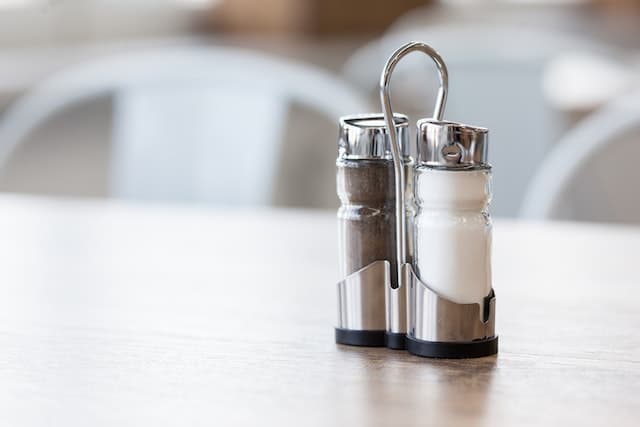Salt and pepper shakers are essential kitchen tools that add flavor to our meals. Over time, these shakers can accumulate dust, grime, and residue that can affect the quality of the seasonings they dispense.
If your salt and pepper shakers have small holes, cleaning them might seem like a tricky task. However, with the right techniques and a little effort, you can keep your shakers clean and functioning properly.
Let’s get started.
Why Clean Salt and Pepper Shakers Regularly?
Regular cleaning of your salt and pepper shakers is important for several reasons.
Firstly, it ensures that your seasonings remain uncontaminated and safe for consumption.
Secondly, clean shakers prevent any unwanted flavors or odors from being transferred to your food.
Lastly, well-maintained shakers with small holes ensure that the right amount of seasoning is dispensed, enhancing the overall dining and cooking experience.
Tools and Materials Needed
Before you begin, gather the following tools and materials:
- Mild dish soap
- Warm water
- Small brush or toothbrush
- Cotton swabs
- Vinegar (optional)
- Soft cloth or paper towels
Step 1: Disassembling the Shakers
Start by disassembling the shakers. Remove the lids or stoppers from the shakers, and empty any remaining salt or pepper into a container. This will make the cleaning process more effective and prevent moisture from getting trapped inside the shakers.
Step 2: Preparing the Cleaning Solution
Create a cleaning solution by mixing mild dish soap with warm water. If your shakers have stubborn stains or odors, you can add a bit of vinegar to the solution. Stir the mixture gently until it forms suds.
Step 3: Cleaning the Exterior
Dip a soft cloth or paper towel into the cleaning solution and wring out excess liquid. Gently wipe the exterior of the shakers, removing any dirt or grease. Pay extra attention to the areas around the openings with small holes.
Step 4: Cleaning the Interior
Use a small brush or toothbrush to clean the interior of the shakers. Be cautious not to scratch or damage the interior surfaces. If the holes are clogged, you can use a cotton swab dipped in the cleaning solution to dislodge any debris.
Step 5: Drying and Reassembling
After cleaning, rinse the shakers thoroughly with clean water to remove any soap residue. Allow them to air dry completely before reassembling the lids or stoppers. Make sure there is no moisture left inside the shakers before putting in seasonings.
Additional Tips for Maintenance
- Avoid using abrasive scrubbers that can scratch the shakers.
- Clean the shakers after every few uses to prevent buildup.
- Store the shakers in a dry and cool place to prevent moisture accumulation.
Conclusion:
Maintaining clean salt and pepper shakers with small holes is essential for preserving the quality of your seasonings and ensuring a delightful dining experience.
By following these simple steps and tips, you can easily keep your shakers in excellent condition.
Do ou want more cleaning tips? Read How to Remove Essential Oil Smell from Fabric.
Frequently Asked Questions (FAQs)
- Can I use regular household cleaners to clean my shakers? It’s best to stick to mild dish soap and warm water to avoid any harmful chemical residues.
- How often should I clean my salt and pepper shakers? Cleaning them after every few uses or at least once a month is recommended.
- Can I put my shakers in the dishwasher for cleaning? It’s not advisable, as the harsh conditions in the dishwasher can damage the shakers.
- What if the holes are still clogged after cleaning? Use a toothpick or a sewing needle to gently unclog the holes, being careful not to enlarge them.
- Is vinegar safe to use for cleaning shakers? Yes, vinegar can help with stubborn stains or odors, but use it sparingly in your cleaning solution.
References:
https://www.foxnews.com/food-drink/pepper-shaker-germs-restaurant-table
https://www.thehealthy.com/food/restaurant-pepper-shakers-bacteria/
Photo by Julia Filirovska from Pexels

